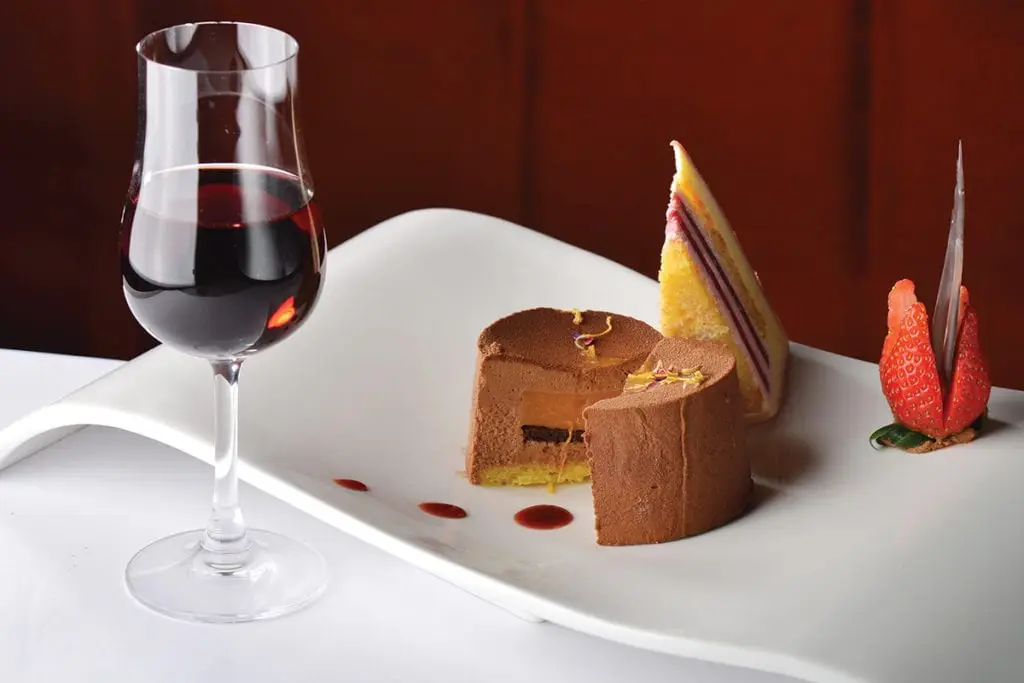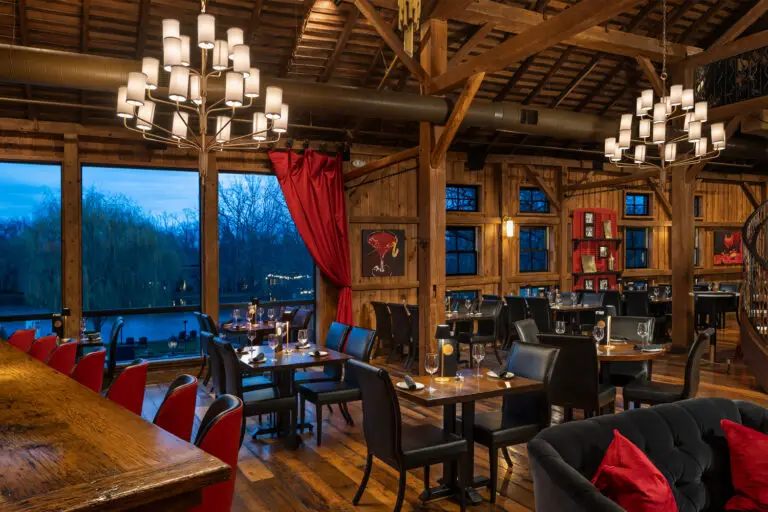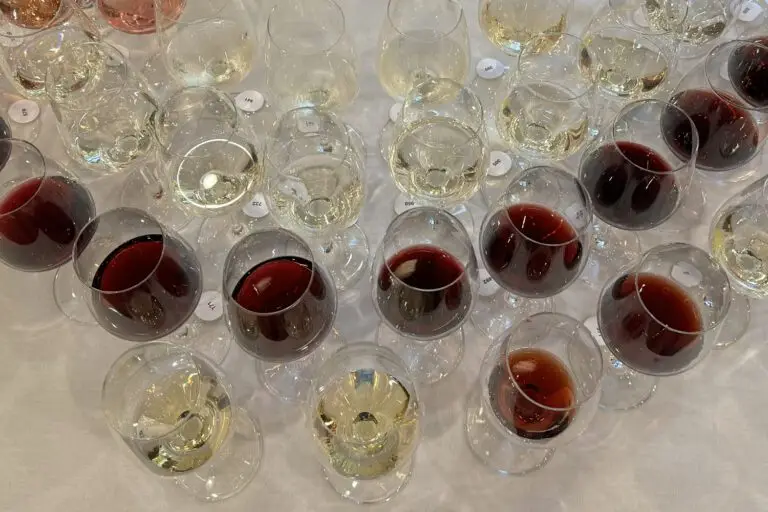Dessert wines are one of the most overlooked and underappreciated wine categories. Part of the challenge is overcoming our past negative experiences with less-than-stellar examples. Another issue is that many wine drinkers mistakenly believe we progress from sweet to dry with increased experience and knowledge. But enjoyed on their own or paired with a dessert, dessert wines are superb taste experiences.
The beauty of fine dessert wines is that regardless of their sweetness level (and they are available in many styles and levels of sweetness), their residual sugar is balanced by other factors. Just remember to match the level of sweetness in the dessert with that of the wine so the wine does not seem sour in comparison.
Here are some the factors utilized to balance a wine’s sweetness, examples of some of the finest dessert wines in the world, and some foods that make for delightful pairings with those wines:
Acidity: Acidity and sweetness balance each other. Acid is necessary for structure, to add length of finish and to pair with food. It also mellows high sweetness levels. Sauternes/Barsac, Champagne and sparkling wine, Malaga, late harvest Rieslings and Moscato all use acidity to buffer their sweetness, as do Madeira and Vin Santo.
Effervescence: Carbon dioxide contains carbonic acid and has the mellowing effect of other acids for sparkling wines such as Moscato and Brachetto d’Acqui.
Heat: Madeira and Vin Santo are two wines that are balanced using heat in production. The best examples are heated and cooled gently in attics over many years.
Tannin: Ruby Porto, Madeira and late harvest Zinfandel or red grape Ice Wine have offsetting astringency from steeping on the grape skins to balance their sweetness.
Alcohol: Fortification (adding alcohol) to wines will help moderate sweetness and is used in Porto, Madeira, Marsala, Muscat de Beaumes de Venise and Banyuls.
Oxidation: The nutty character that oxygen contact offers to wine is a fine counterpoint to sweetness and offers complexity to the beverage. Sherry, Rutherglen “Stickies”, Tawny Porto and Marsala all belong in this category.
Wood Aging: The characteristic flavor of aged barrels mellows sweetness and gives personality and structure to those wines so aged. Sherry, Rutherglen “Stickies,” Tawny Porto, Malaga, Madeira and Sauternes/Barsac are usually aged in wood.
Bottle Age and Time: The perception of sweetness seems to lessen with aging in the bottle. Many dessert wines are produced with the thought of being laid down in the cellar to mellow and gain complexity. Those wines that are focused on freshness (Muscat, Malaga, Beaumes de Venise, Brachetto d’Acqui, lightly sweet sparklers) should be consumed close to the date of release, but many of the finer wines (fortified styles, Sauternes/Barsac, Pedro Ximenez, Botrytised Riesling and Chenin Blanc, Vintage Portos) are better and less sweet after some years of bottle age.
Pairing with Food: Simply pairing a dessert wine and dessert can temper the sweetness of both.
Some Dessert Pairing Suggestions:
Banyuls: chocolate, blue cheese, nuts, dried fruit
Brachetto d’Acqui: red fruit tarts, chocolate
Champagne and Sparkling Wine: paté, cakes, pastries
Late Harvest Rieslings: chocolate, blue cheese, apple/lemon/key lime pies, shortbread
Malaga: cakes, pastries, shortbread
Moscato: light cakes, fruit tarts, fresh fruit
Muscat de Beaumes de Venise: shortbread, fresh fruit, fruit tarts, cakes
Porto, Madeira, Marsala: zabaglione, nuts, toffee, caramel, chocolate, biscuits, cookies
Porto (Ruby): chocolate, blue cheese, dried fruit, nuts
Porto (Tawny): chocolate, crème brûlée, biscotti
Sauternes/Barsac: foie gras, blue cheese, dried fruit
Sherry, Rutherglen “Stickies”: toffee, caramel, chocolate, bread pudding
Vin Santo: cheese, chocolate, shortbread, biscotti, peanut/chocolate bars
Dessert wines enjoyed on their own or paired with a dessert are some of life’s finest pleasures. Experiment with them to experience different styles and find what pleases your palate.





